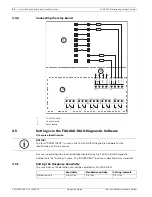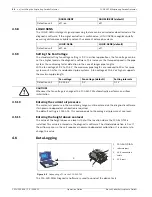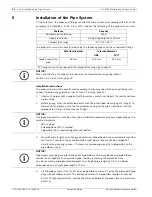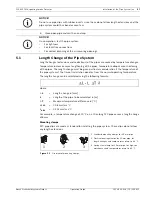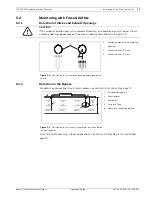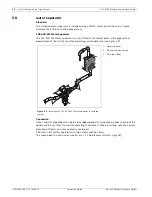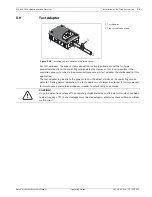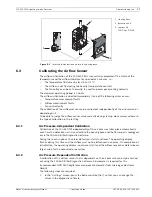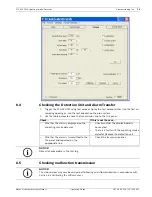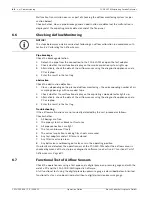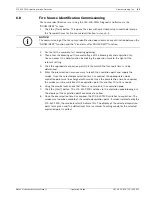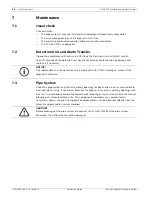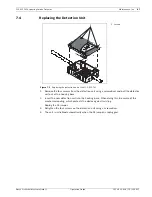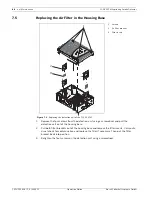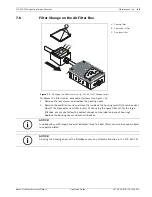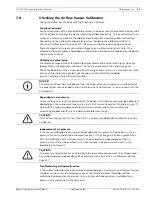
76
en | Commissioning
FCS-320-TM Aspirating Smoke Detector
F.01U.130.928 | 1.0 | 2009.11
Operation Guide
Bosch Sicherheitssysteme GmbH
6
Commissioning
6.1
Preparation
Checking the settings
Install the pipe system fully before inserting the detection unit and connect it to the housing
base of the FCS-320-TM.
Connection test
Check whether...
1.
The correct aspiration reducing film sheets are glued to the air sampling openings.
2.
The pipe system is securely connected to the FCS-320-TM pipe connection.
3.
All pipe fittings are glued together and the pipe system is sealed.
To do this, first close all air sampling openings (e.g. with duct tape). Then measure the
negative pressure at the opening for the return airflow using a digital precision pressure
gauge (see
Section 6.7.2 Conducting the Functional Test, page 82
).
After a short run-up time, the negative pressure must be 80 Pa.
FAS-ASD-DIAG Diagnostic Software
Then check the system using the FAS-ASD-DIAG Diagnostic Software.
Follow the procedure below:
1.
Install the diagnostic software on a laptop or PC (for system requirements and
connections, see
Section 4.6 Data Logging, page 64
).
2.
The data transmission of the FCS-320-TM takes place bidirectionally via the infrared port
on the front of the device. The diagnostic appliance is connected to the PC using the USB
cable provided.
3.
The diagnostic software is started.
The current FCS-320-TM data is displayed on the PC's screen.
6.2
Detection Unit Commissioning
1.
Insert the FCS-320-TM detection unit into the pre-mounted housing base, which has been
checked for correct wiring.
2.
Replug the X4 jumper when inserting the detection unit (PIN 1-2 or PIN 2-3, or vice
versa). Replugging will cause airflow calibration to be carried out automatically (see
Figure 6.1
).
3.
The green operation display flashes when the FCS-320-TM is initializing. If initialization is
complete, the operation display lights up permanently.
4.
The airflow of the FCS-320-TM must not be influenced during the initialization phase.
NOTICE!
For a later evaluation of the airflow value, record the calibration type (see
Section 6.3 Calibrating the Airflow Sensor
), start-up temperature, air pressure and height above
sea level in the test log (see
Section 8.3 Test Log for FCS-320-TM Series Aspirating Smoke
Detectors, page 96
).
NOTICE!
When inserting the detection unit, be aware of the mechanical coding, which protects the
device against twisting.
Summary of Contents for FCS-320-TM
Page 1: ...FCS 320 TM Aspirating Smoke Detector FCS 320 TM FCS 320 TM R en Operation Guide ...
Page 2: ......
Page 99: ......

